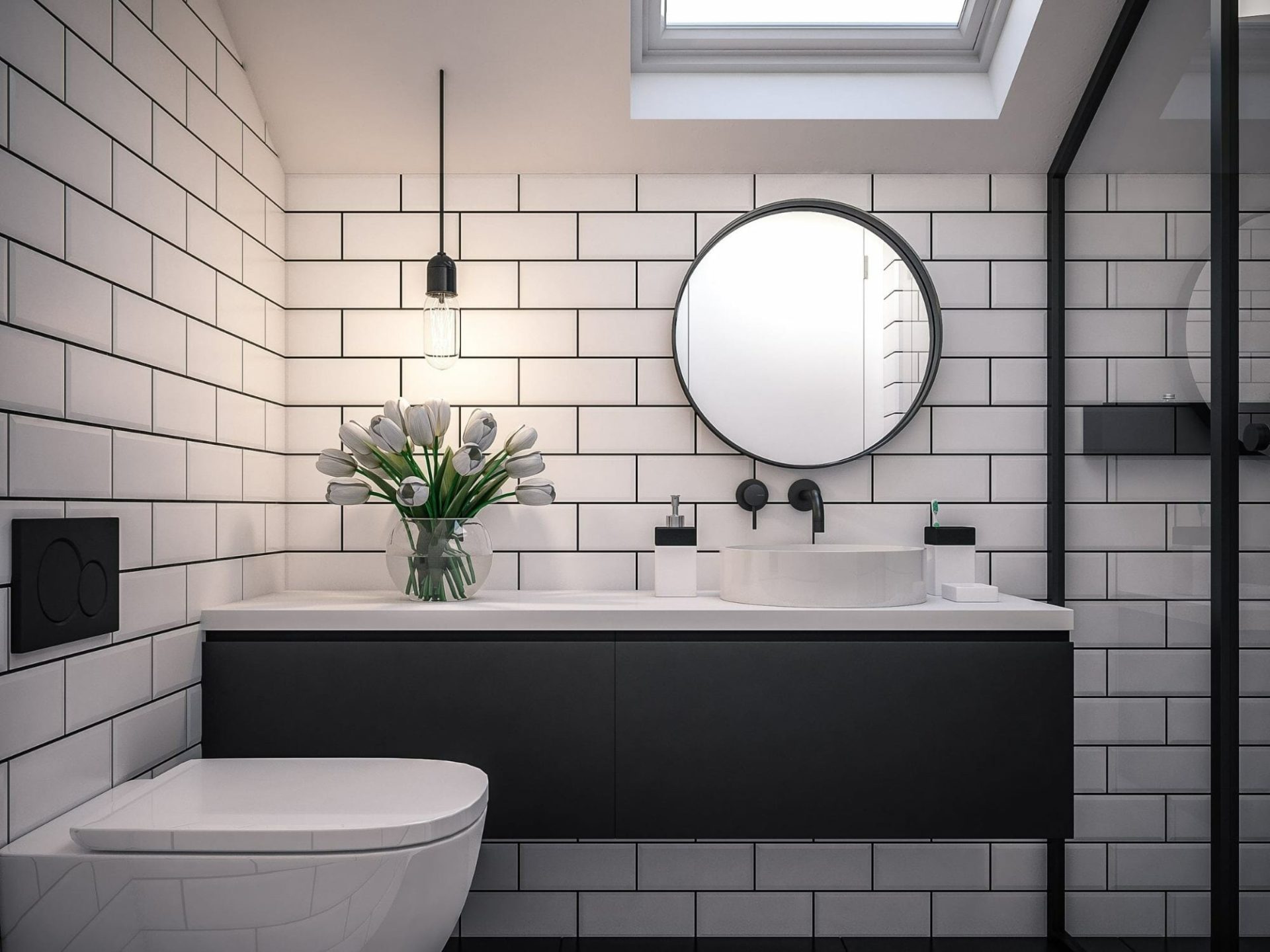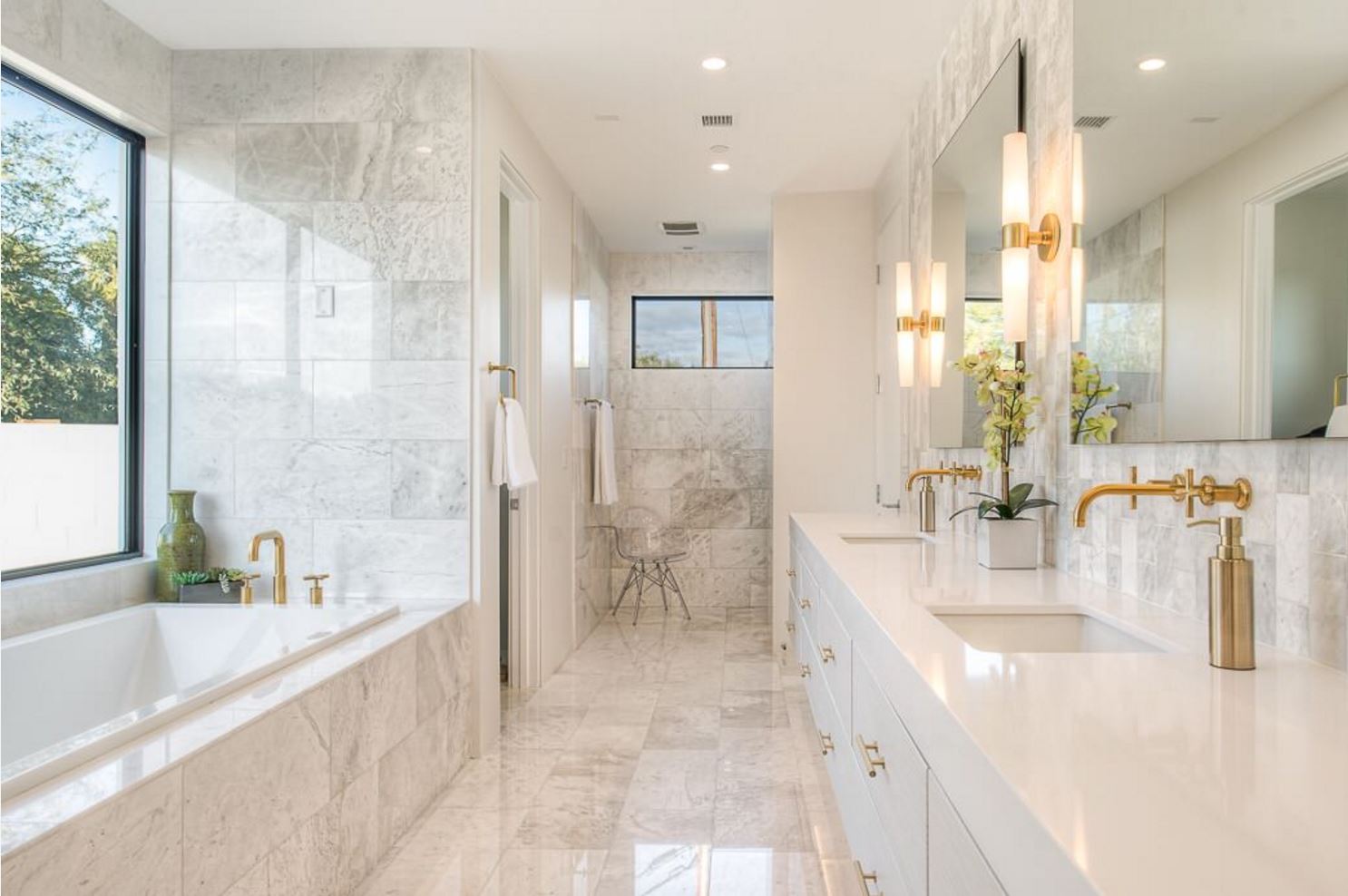Setting the Mood
Bathroom lighting is more than just functionality; it sets the tone for your entire experience. Think of it as the soundtrack to your morning routine or the ambiance for a relaxing evening soak. With the right lighting, your bathroom can transform into a tranquil spa, a modern oasis, or a cozy retreat.
Lighting for a Spa-Like Atmosphere
Creating a spa-like atmosphere is all about tranquility and relaxation. Imagine soft, diffused light that mimics the natural glow of twilight. This can be achieved through various techniques:
- Dimmable Overhead Lighting: Opt for dimmable LED ceiling lights or recessed lighting to adjust the brightness according to your mood. A warm white light temperature (2700K-3000K) will create a soothing and inviting ambiance.
- Ambient Lighting: Incorporate soft ambient lighting with wall sconces, pendant lights, or even LED strip lights. These can be placed strategically around the room to create a gentle, layered glow. Consider using frosted glass shades or diffusers to soften the light.
- Accent Lighting: Highlight specific features like a beautiful bathtub or a decorative mirror with accent lighting. This can be achieved with spotlights, track lighting, or even decorative LED strips.
Functional Lighting

It’s not just about ambiance; good lighting is crucial for making sure you can actually see what you’re doing. Whether you’re applying makeup, shaving, or getting ready for the day, having the right kind of light makes all the difference.
Lighting Solutions for Vanity Areas
Good lighting is essential for applying makeup, shaving, and other tasks in the bathroom. You want to ensure that the lighting is bright enough to see clearly, but also flattering and even.
- Vanity Lights: Vanity lights are a common choice for bathroom lighting. They are typically mounted on the wall above the mirror, and they can be either hardwired or plugged in. There are many different styles of vanity lights available, so you can choose one that complements the style of your bathroom.
- Mirror Lights: Mirror lights are built into the mirror itself. They can be a great way to add a touch of style to your bathroom, and they also provide even and flattering illumination.
- Task Lighting: For more focused light, consider using a task lamp. These lamps can be placed on a counter or vanity and can be adjusted to provide light exactly where you need it.
Lighting Solutions for Shower Stalls, Creative bathroom lighting ideas
Shower lighting is essential for safety and functionality. You want to make sure that the lighting is bright enough to see clearly, but also waterproof and durable.
- Recessed Lighting: Recessed lights are a popular choice for shower lighting. They are installed in the ceiling, and they can provide a clean and modern look.
- Sconce Lighting: Sconces are wall-mounted lights that can be placed near the shower. They can be a great way to add a touch of style to your bathroom, and they also provide a warm and inviting glow.
- Shower Head Lighting: Some shower heads come with built-in LED lights. These lights can provide a bright and even illumination, and they can also be a fun and stylish addition to your shower.
Lighting Solutions Around Mirrors
Mirrors are a must-have in any bathroom, and they can be used to create the illusion of more space. They also reflect light, which can help to brighten up a room.
- Ambient Lighting: Ambient lighting is general lighting that illuminates the entire room. It can be provided by overhead fixtures, such as chandeliers or ceiling fans with lights.
- Accent Lighting: Accent lighting is used to highlight specific features in a room. In a bathroom, you might use accent lighting to highlight a mirror or a piece of artwork.
Benefits of Using Different Types of Bulbs
- LED Bulbs: LED bulbs are energy-efficient and long-lasting. They are also available in a variety of colors, so you can choose one that complements the style of your bathroom.
- Incandescent Bulbs: Incandescent bulbs are traditional bulbs that produce a warm and inviting glow. However, they are not as energy-efficient as LED bulbs.
- Halogen Bulbs: Halogen bulbs are brighter than incandescent bulbs, and they have a longer lifespan. However, they are also not as energy-efficient as LED bulbs.
Creative Lighting Techniques

Accent lighting is the unsung hero of bathroom design. It’s the secret weapon that elevates your space from functional to fabulous. By strategically placing lights to highlight specific areas, you can create a bathroom that’s not only beautiful but also feels inviting and luxurious.
Accent Lighting Techniques
Accent lighting is a powerful tool for creating visual interest and depth in a bathroom. It allows you to draw attention to specific features, add dimension to the space, and create a warm and inviting ambiance. Here are some ways to use accent lighting to enhance your bathroom:
- Highlight Architectural Features: Use sconces or recessed lighting to illuminate architectural details such as crown molding, decorative niches, or even a unique tile pattern. The light will draw the eye to these features, adding visual interest and dimension to the space.
- Emphasize Artwork or Decorative Elements: A strategically placed spotlight can transform a simple piece of artwork or a decorative element into a focal point. It can also be used to create a sense of drama and intrigue.
- Create a Sense of Depth: Accent lighting can be used to create the illusion of depth in a small bathroom. By using recessed lighting to highlight a specific area, you can make it appear further away than it actually is.
Types of Accent Lighting
Here’s a table showcasing some of the most popular types of accent lighting for bathrooms:
| Type | Description | Pros | Cons |
|---|---|---|---|
| Sconces | Wall-mounted fixtures that provide both ambient and accent lighting. | Versatile, can be used to highlight artwork, mirrors, or architectural features. Available in various styles to complement different bathroom designs. | May require professional installation. Can be more expensive than other types of accent lighting. |
| Recessed Lighting | Lights that are installed flush with the ceiling or walls, providing a clean and minimalist look. | Discreet and efficient. Can be used to create a sense of depth or highlight specific areas. | May require professional installation. Can be difficult to install in existing bathrooms. |
| Strip Lights | Flexible LED strips that can be used to create accent lighting under cabinets, along walls, or even inside shower niches. | Versatile and affordable. Easy to install and customize. | May require a power source. Can be less durable than other types of accent lighting. |
Examples of Accent Lighting
- Sconces above a vanity mirror: This is a classic way to use accent lighting to create a warm and inviting ambiance in the bathroom. The sconces can be used to highlight the mirror and the surrounding area, making the space feel more spacious and luxurious.
- Recessed lighting in a shower niche: Recessed lighting can be used to highlight a shower niche, creating a sense of depth and dimension. It can also be used to illuminate the shower area, making it easier to see and use.
- Strip lights under a bathroom cabinet: Strip lights can be used to create a soft, ambient glow under a bathroom cabinet. This can be a great way to add a touch of elegance to the space and make it easier to see what’s inside the cabinet.
Smart Lighting Solutions: Creative Bathroom Lighting Ideas

Imagine stepping into your bathroom and instantly feeling relaxed, thanks to the soft, warm glow of your lights. Or maybe you want to get energized for the day with a bright, cool white light. With smart lighting, you can personalize your bathroom experience like never before.
Smart lighting is a game-changer in the bathroom, offering a level of control and customization that traditional lighting simply can’t match.
Benefits of Smart Lighting in the Bathroom
Smart lighting in the bathroom brings numerous benefits, including:
- Customizable Color Temperatures: Set the mood for any occasion, whether you’re taking a relaxing bath or getting ready for a night out. Switch between warm, cool, or even colorful lighting to create the perfect ambiance.
- Voice Control: Adjust lighting levels and color temperatures with your voice, leaving your hands free for other tasks.
- Automation: Program your lights to turn on and off automatically at specific times, creating a sense of safety and convenience.
- Energy Efficiency: Smart lighting systems can help you save energy by automatically turning off lights when not in use.
Examples of Smart Lighting Systems
There are many different smart lighting systems available, each with its own unique features:
- Philips Hue: This popular system offers a wide range of smart bulbs, light strips, and accessories, allowing you to create customized lighting scenes and control them with your voice, smartphone, or tablet.
- LIFX: LIFX smart bulbs are known for their vibrant colors and advanced features, including the ability to change colors and brightness based on the time of day.
- Amazon Echo: Amazon’s smart speaker can control compatible smart lights, allowing you to adjust lighting levels and color temperatures with your voice.
Creating Unique Bathroom Experiences
Smart lighting can transform your bathroom into a truly interactive space:
- Color Therapy: Use different colors to create specific moods. For example, blue light can promote relaxation, while yellow light can boost energy levels.
- Personalized Lighting Scenes: Create customized lighting scenes for different activities, such as a relaxing bath, a morning routine, or a makeup session.
- Interactive Lighting: Use smart lighting to create dynamic effects, such as lighting that changes with the music you’re listening to or that reacts to your movements.
Safety and Efficiency
Bathroom lighting isn’t just about aesthetics; it’s crucial for safety and energy efficiency. The damp environment of a bathroom poses unique challenges, requiring careful consideration of fixture selection and installation. Let’s explore the key aspects of bathroom lighting safety and efficiency.
Damp Environment Lighting
Using the right lighting fixtures in a damp environment is essential for safety. Damp locations are prone to moisture and condensation, increasing the risk of electrical hazards. Here’s what to keep in mind:
- Fixture Type: Opt for fixtures specifically designed for damp locations, often labeled with an “IP” rating. This rating indicates the fixture’s resistance to water ingress. For example, an IP44 rating means the fixture is protected against splashes of water from any direction.
- Installation: Always follow manufacturer instructions and local electrical codes when installing bathroom lighting. Proper grounding and wiring are crucial for preventing electrical shocks.
- Regular Maintenance: Inspect fixtures regularly for signs of damage, corrosion, or loose connections. Replace damaged fixtures promptly.
Energy-Efficient Lighting Options
Choosing energy-efficient lighting options can significantly reduce your bathroom’s energy consumption and lower your utility bills. Here are some tips:
- LED Bulbs: LED bulbs are known for their energy efficiency and long lifespan. They use significantly less energy than traditional incandescent bulbs while providing excellent brightness.
- Dimmable Fixtures: Dimmable fixtures allow you to adjust the brightness level, reducing energy consumption when full brightness isn’t needed.
- Motion Sensors: Motion sensor lights automatically turn on when movement is detected, reducing energy waste by only illuminating the space when necessary.
Safe Installation and Maintenance
Proper installation and regular maintenance are crucial for ensuring the safety and longevity of your bathroom lighting. Here’s a guide:
- Professional Installation: For complex electrical work, it’s always best to consult a licensed electrician to ensure proper installation and adherence to local codes.
- Regular Inspections: Periodically inspect fixtures for loose connections, frayed wires, or signs of corrosion. Address any issues promptly.
- Avoid Overloading Circuits: Don’t overload electrical circuits by connecting too many fixtures or appliances to a single outlet. This can lead to overheating and fire hazards.
